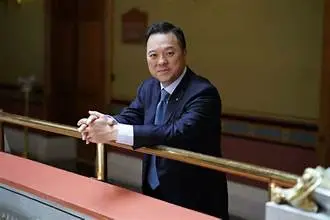Stephen Acunto was 70 when he stepped into the ring with Muhammad Ali for a little friendly sparring. It was for a boxing video. He and his wife, Mercedes, were headed to a luncheon that day, “My wife said, ”˜Don’t do it. You’ve got a tie on. You”™ll get all sweaty.”™”
He stripped to his T-shirt. “This was Muhammad Ali,” Acunto said. After mixing it up, the champ joked, “Stephen here is 99 years old.”
Acunto produces a big glossy poster of the event and does what a gentleman who mixes it up with Ali ”“ “I got a glove in and tapped him on the forehead a couple of times” ”“ does: He autographs it ”¦ just as many have done for him, often many times over on various programs or sets of gloves: Willie Pep, Rocky Marciano, Ali.
Acunto has big hands and a firm grip. He is still spry and still works out daily in his basement gym at 89. He knew Sugar Ray Robinson, with whom he was greatly impressed ”“ “a real boxer” ”“ and he knew Jake LaMotta ”“ “more of a ”˜get in there and slug it out”™ fighter.”
Acunto was for 37 years involved in county law enforcement, the majority of that time with the county Sheriff’s Department rising to director of crime prevention and youth activities. His memorabilia includes law enforcement badges among photos that define a life of helping people through public service ”“ via 32 years coaching boxing at Westchester Community College and still going strong.Â
He counted Rocky Marciano among his friends.
Best bouts? He quickly cites the Frazier-Ali wars and spends a minute reflecting on the Thriller in Manila. He rhapsodizes about Ali’s style and wisdom vs. the athleticism of a young George Forman in Zaire: “A terrific fight. Ali, a real gentleman, arrived in the country early and really endeared himself to the people. Not so Foreman.” That was the famous rope-a-dope fight when Ali used what some thought loose ring ropes to great advantage. Acunto said the ropes were not slack and credits Ali for “fighting a great, great fight.”
Acunto was a kid of 12 on Staten Island when he caught the boxing bug.
“I admired people who accepted a challenge,” he said.
Gene Tunney was his idol: “I read his book three or four times.”
A bit of skullduggery got him to his first bout: He told his mother he was going to a baseball game. He went with the neighborhood iceman, Mickey Cancro, also an amateur boxer. “My parents absolutely despised boxing with a passion. They considered it a hoodlum’s game. But I had to prove something. I”™ve always been a maverick since I was 12 years old.”
That first fight featured Joe Marino (“one of those walk in and bang-it-up guys”) vs. Matty Mario (“an artist”).
“Watching Matty Mario, I realized that what Gene Tunney talked about in his book was being demonstrated here: real skill. The sweet science. I liked it very much.” The 12-year-old Acunto later met Mario and was taken under his wing. He helped at Mario’s Christmas tree stand and Mario gave Acunto his first boxing lessons. Acunto kept his parents in the dark. Over the years, he boxed in 30 exhibitions, more a teacher and student of the sport than a prize fighter, although he earned money at it and has a greenback reminder of several early paychecks framed on his Mount Vernon home office wall.
Acunto”™s wife, Mercedes, worked for the Mount Vernon public schools. “She was a brilliant educator and editor,” he said, gesturing to her immaculately kept desk. “She had a doctorate ”“ a brilliant girl. We were married 57 years. She died five years ago. She was my inspiration and I miss her.”
Acunto has written “Ring, Rhyme and Reason,” a boxing column, for 35 years; it appears in Boxing Digest and 15 other periodicals. He is the author of the book “Champions Boxing Guide,” a pugilistic A-Z as seen through the tactics of Ali, Willie Pep and Marciano.
He has four children: Stephen H.; Stephanie Thompson; Donna D”™Angelo; and Laura Markevic.
Acunto is a decades-long resident of the U.S. Capitol. He was working out in Manhattan”™s Stillman”™s Gym when sculptor Allan Cox came in looking for a model. Acunto is two people on the Capitol dome frieze: a soldier manning a cannon and not far away a soldier shaking an officer”™s hand. “They wanted somebody who looked like a Spanish sailor from the Spanish-American War,” he said. “Isn’t that something?”



















